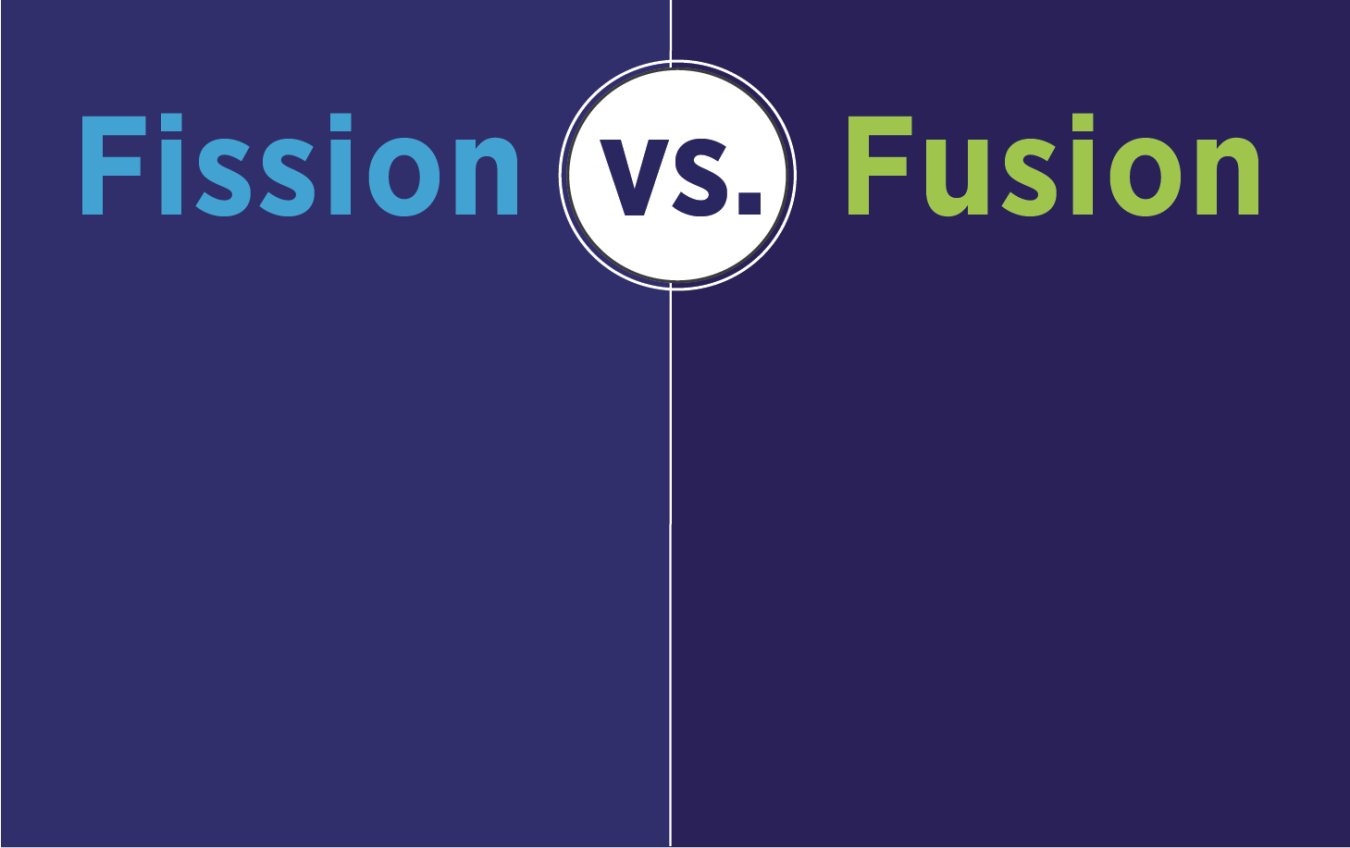Infographic: Learn the difference between fission and fusion - two physical processes that produce massive amounts of energy from atoms.
April 1, 2021All of the energy we produce comes from basic chemical and physical processes.
That’s mostly been accomplished throughout history by burning carbon-based material like wood, coal and gas—or by harnessing power from the sun, wind, and water.
Fission and fusion are two physical processes that produce massive amounts of energy from atoms.
They yield millions of times more energy than other sources through nuclear reactions.
You can check out the difference between the two in this video below.
Fission
Fission occurs when a neutron slams into a larger atom, forcing it to excite and split into two smaller atoms—also known as fission products. Additional neutrons are also released that can initiate a chain reaction.
When each atom splits, a tremendous amount of energy is released.
Uranium and plutonium are most commonly used for fission reactions in nuclear power reactors because they are easy to initiate and control.
The energy released by fission in these reactors heats water into steam. The steam is used to spin a turbine to produce carbon-free electricity.

Click above to view our full fission vs fusion infographic.
Fusion
Fusion occurs when two atoms slam together to form a heavier atom, like when two hydrogen atoms fuse to form one helium atom.
This is the same process that powers the sun and creates huge amounts of energy—several times greater than fission. It also doesn’t produce highly radioactive fission products.
Fusion reactions are being studied by scientists, but are difficult to sustain for long periods of time because of the tremendous amount of pressure and temperature needed to join the nuclei together.

